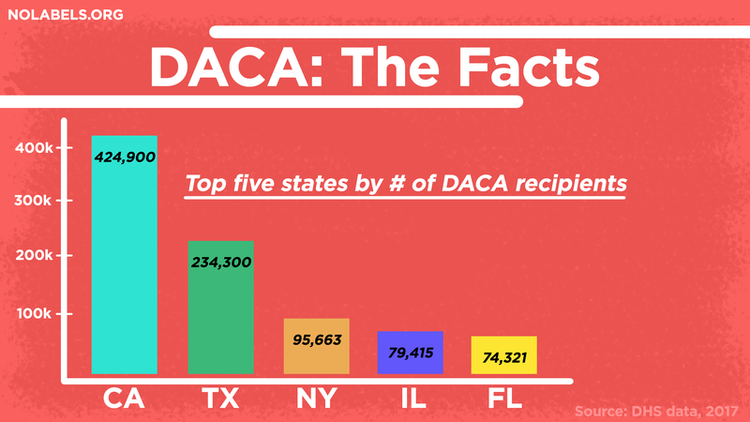Five Things You Need to Know About DACA

Since President Trump announced he would not renew the Deferred Action for Childhood Arrivals program, Congress has been tasked with writing its replacement. While Democrats have been pushing for new legislation before the year’s end, it looks increasingly likely that DACA will be debated in early 2018.
This means Americans should be prepared for DACA to dominate headlines in the first part of the year. DACA, created by President Obama through 2012 executive orders, allows undocumented immigrants brought to the U.S. before their 16th birthday to “request temporary relief from deportation proceedings and apply for work authorization.” Close to 800,000 people have taken advantage of this program, which allows them to attend school and work in the country legally.
Right now, DACA recipients are set to lose their status on March 5, 2018. As lawmakers on both sides of the aisle work towards a solution, here are the five things you need to know about DACA:
1. The DACA recipients call themselves “Dreamers,” which comes from a failed congressional bill.
The name “Dreamers” is derived from the Development, Relief, and Education for Alien Minors Act, federal legislation similar to DACA that was first introduced in 2001 but did not pass. It has since been reintroduced multiple times and has enjoyed bipartisan support, though it has never been able to get enough momentum to become law.
2. There are hundreds of thousands of DACA recipients, living in all corners of the country.
According to U.S. Citizenship and Immigration Services, there are close to 800,000 “Dreamers,” all of whom had to have been younger than 31 on June 15, 2012 to qualify for the program. While these recipients live throughout the U.S., some states have particularly high numbers of beneficiaries. More than 200,000 live in California; 120,000 live in Texas; and 42,000 live in Illinois and New York.

3. While DACA recipients are from all over the world, most were born in Central America.
The vast majority of DACA recipients were born in Central America, namely Mexico, El Salvador, Guatemala, and Honduras. But there is also a sizable number of beneficiaries from Asia, including the Philippines, South Korea, and India.
4. Right now, immigration reform advocates are pushing to include a measure helping DACA recipients in a government spending bill.
If the spending bill doesn’t pass by Friday December 22, there will be a government shutdown, which would have numerous consequences, including postponing further legislative efforts to help Dreamers. A government shutdown would also cause federal employees to get furloughed, national parks to close, and prevent passports and visa applications from being processed.
5. There are multiple bills in Congress looking to replace DACA.
These replacement bills include the RAC (Recognizing America’s Children) Act; the BRIDGE (Bar Removal of Individuals who Dream and Grow our Economy) Act; and another iteration of the DREAM (Development, Relief, and Education for Alien Minors) Act. Some, like the RAC and DREAM Acts, provide paths to citizenship, which DACA does not. And the BRIDGE Act enjoys bipartisan support — 16 Democrats and 16 Republicans are co-sponsors of the bill.
Both Democrats and Republicans see the urgency in securing DACA recipients’ immigration status. In the coming days, we will know more about when talks will continue and if protections will be extended.
No Labels is an organization of Democrats, Republicans, and independents working to bring American leaders together to solve problems.




